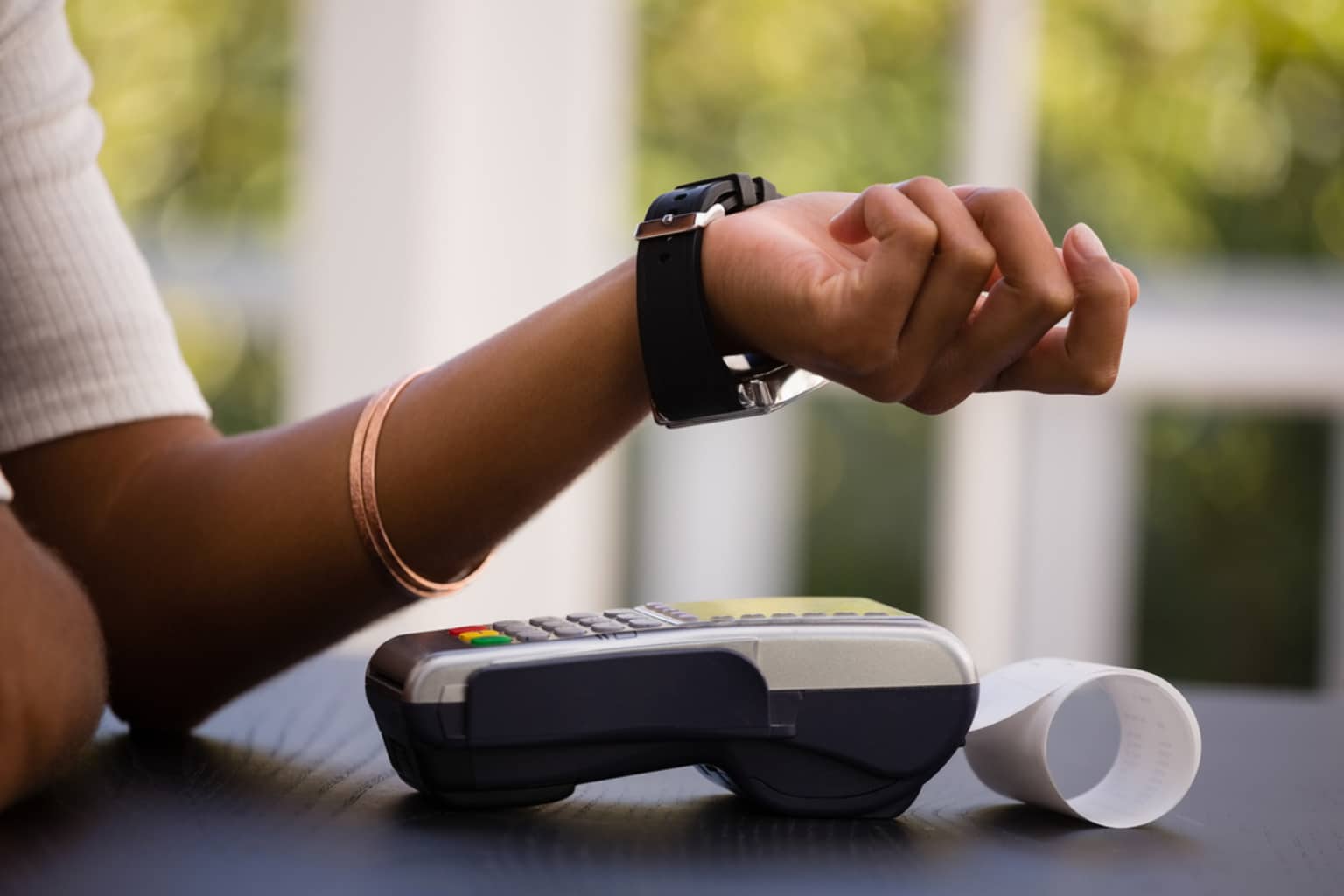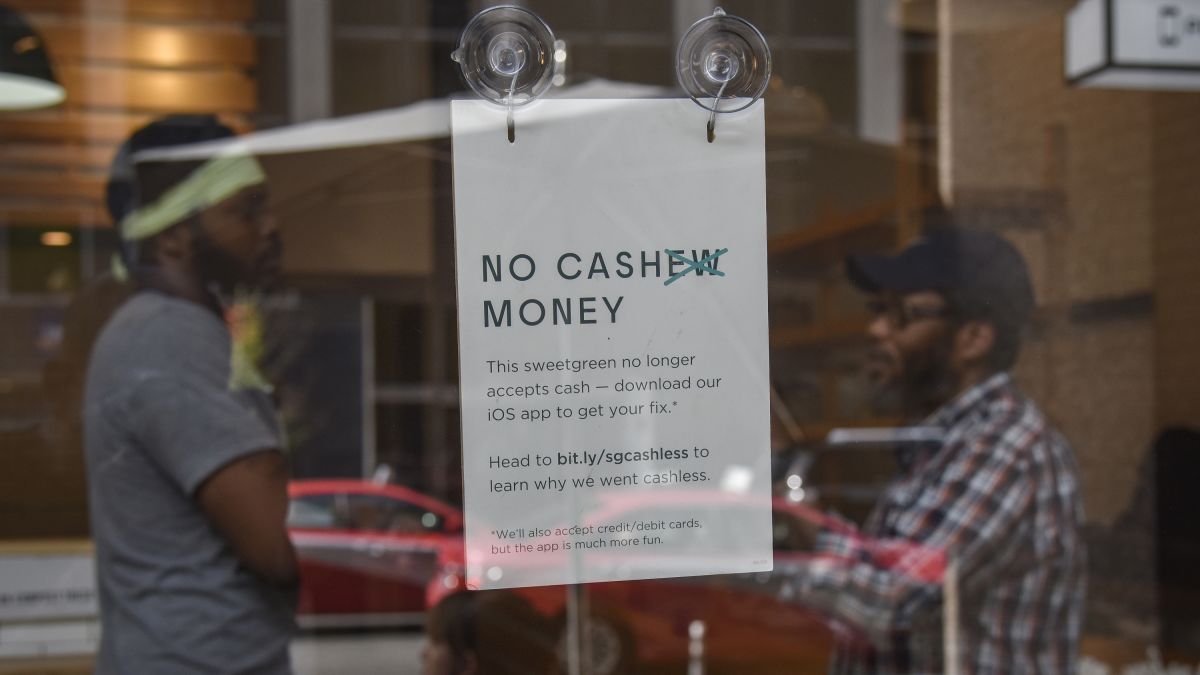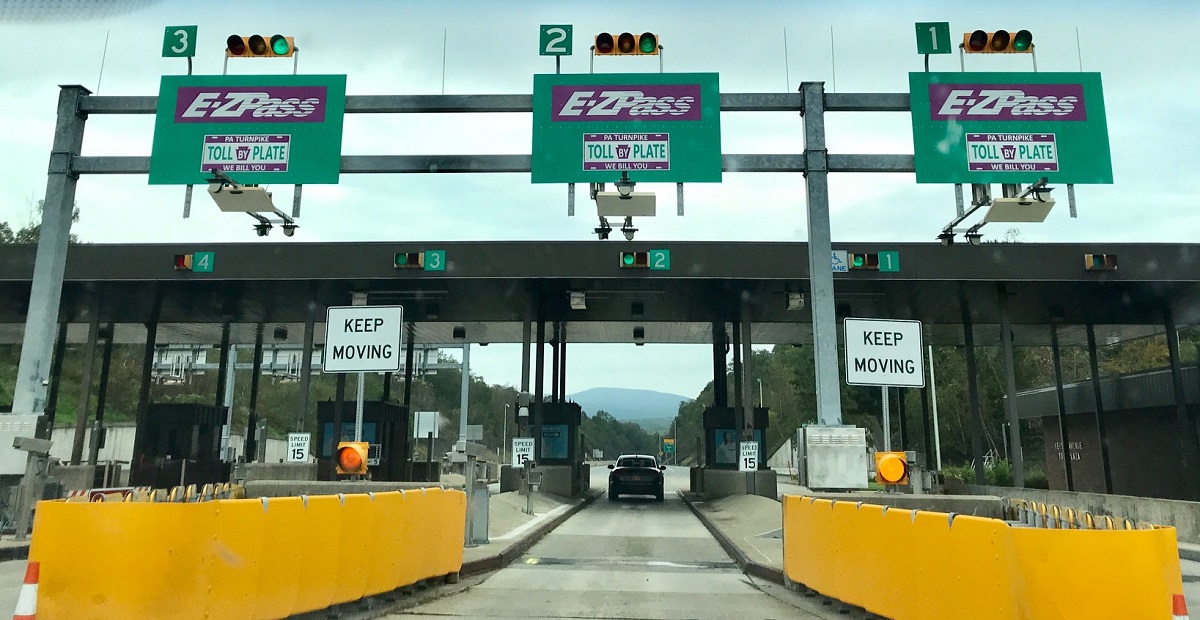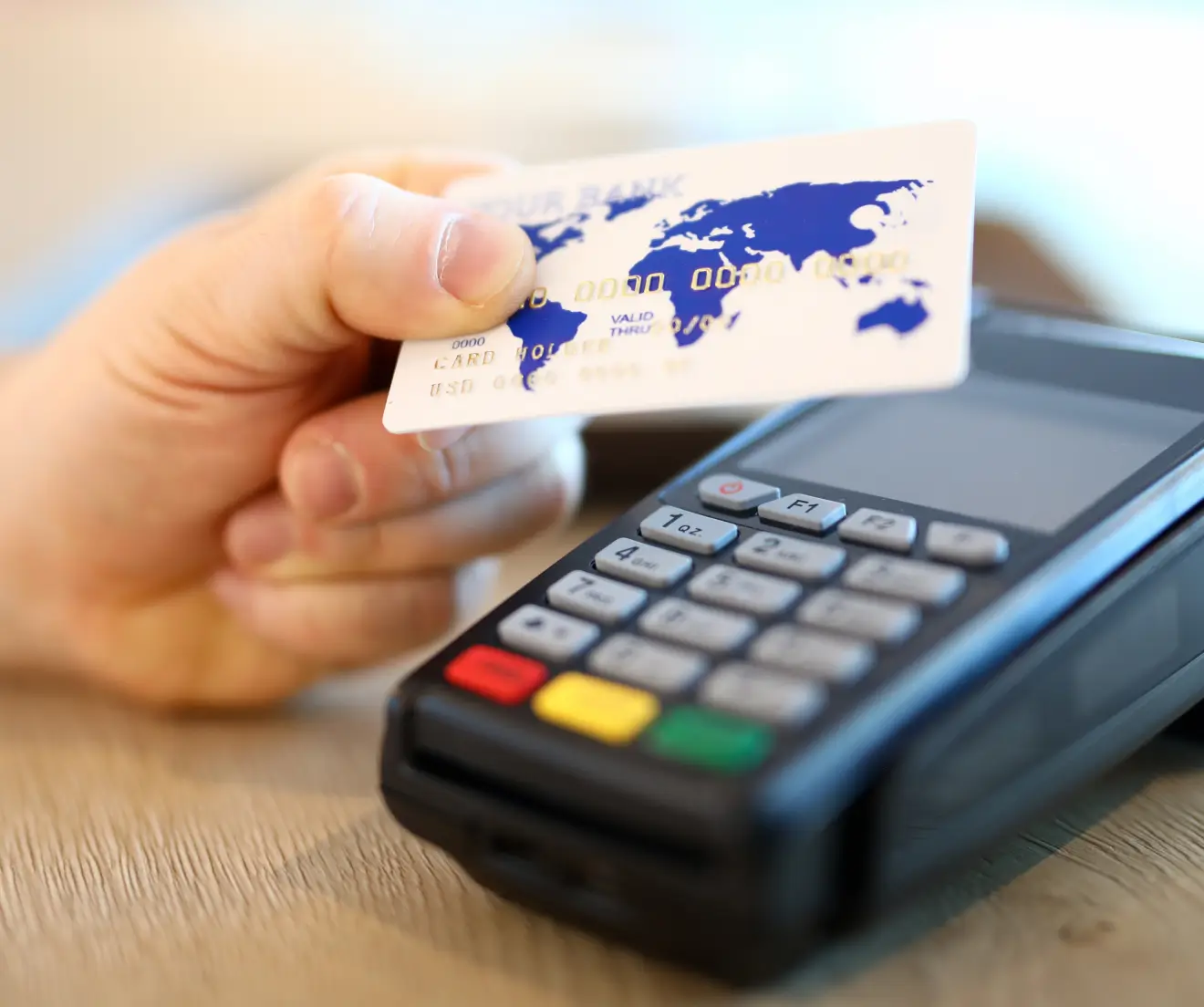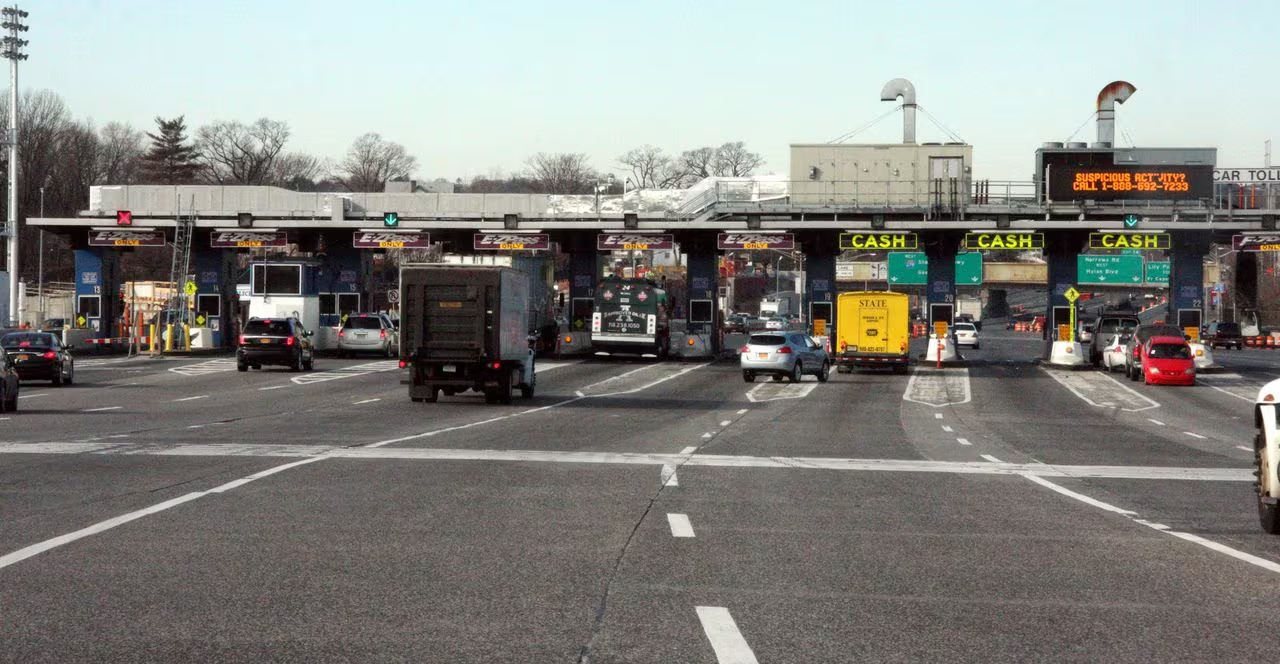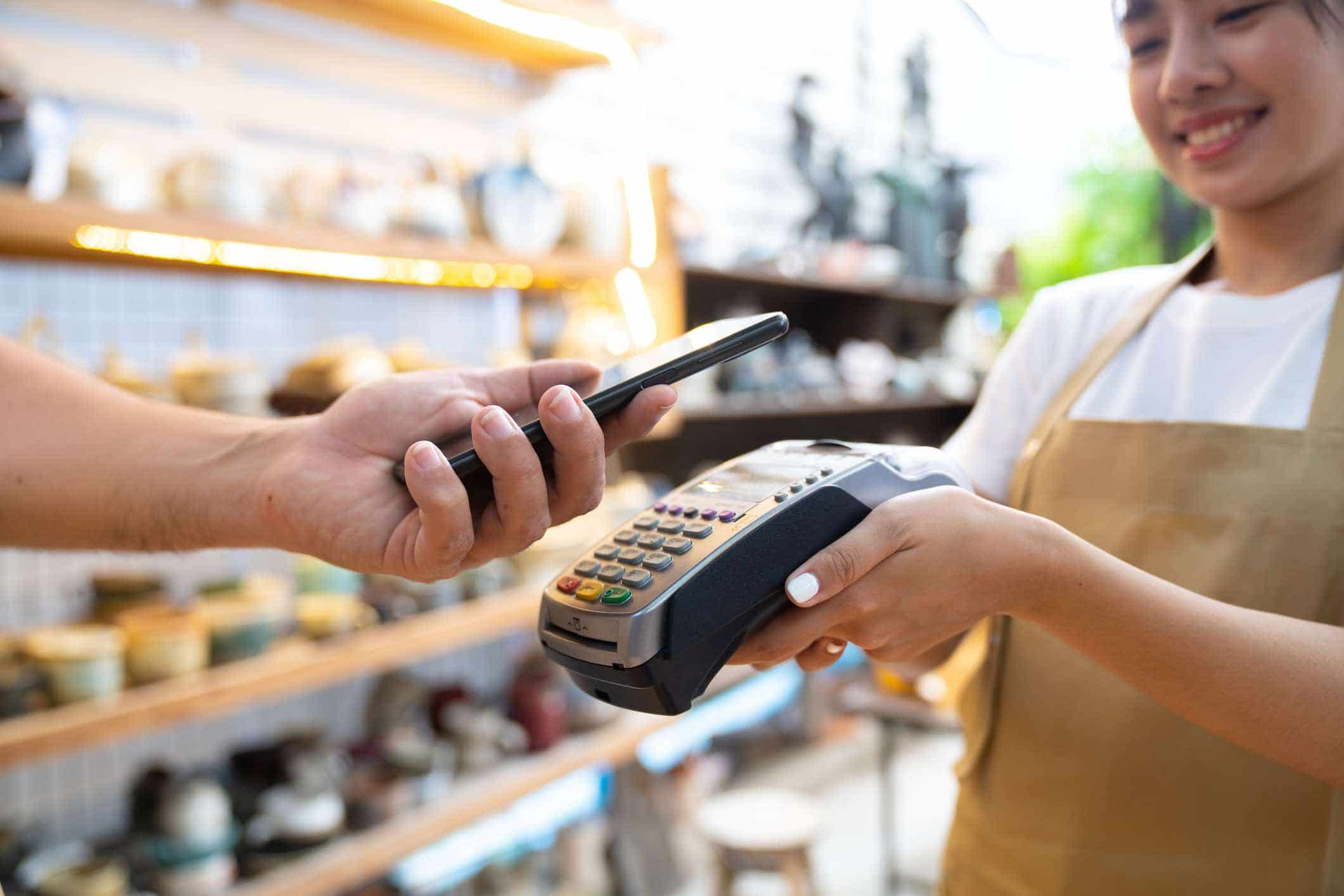Cashless Transactions in the US: A Glimpse into the Future
The concept of a cashless society is rapidly gaining traction, and the United States is not immune to this global trend. As technology continues to advance and consumer behavior evolves, the emergence of cashless transactions is becoming more prevalent. This shift is reshaping the way we conduct financial transactions and offering a glimpse into a future where physical cash may no longer be the primary mode of payment.
Advancements in digital payment systems and mobile technologies have paved the way for the rise of cashless payments. This new era of financial transactions offers a variety of benefits for both consumers and businesses. One of the key advantages is convenience. With cashless transactions, individuals no longer need to carry around bulky wallets or worry about running out of cash. Instead, they can make quick and secure payments using their smartphones or other digital devices.
Another significant benefit of a cashless society is enhanced security. Cash transactions are susceptible to theft, loss, and counterfeiting. By transitioning to digital forms of payment, consumers can enjoy the peace of mind that comes with secure and traceable transactions. Additionally, businesses can reduce the risk of theft and streamline their accounting processes.
The current state of cashless transactions in the US is a mix of progress and gradual adoption. While credit and debit cards have become commonplace, other innovative payment options such as mobile wallets, contactless payments, and peer-to-peer transfers are gaining momentum. Major players in the financial industry, including banks, payment processors, and technology companies, are constantly exploring ways to improve and expand the availability of cashless options.
Several factors are driving this shift towards a cashless future. Firstly, as the younger generation becomes the dominant group of consumers, their preference for digital solutions and mobile-centric lifestyles influences the demand for cashless transactions. In addition, the COVID-19 pandemic has accelerated the adoption of contactless payments, as people prioritize hygiene and minimize physical contact.
The Rise of Cashless Payments
The rise of cashless payments has revolutionized the way we exchange money and conduct financial transactions. In recent years, the convenience and security offered by digital payment methods have propelled the cashless movement forward, transforming the way we interact with money.
One of the driving forces behind the rise of cashless payments is the increasing popularity of mobile devices. With the widespread adoption of smartphones and tablets, consumers now have access to a wide array of mobile payment applications and digital wallets. These platforms allow users to make purchases, transfer funds, and manage their finances all from the palm of their hand.
Another factor contributing to the growth of cashless payments is the evolution of online shopping. As e-commerce continues to dominate the retail landscape, the need for convenient and secure payment methods has become paramount. With options like credit and debit cards, digital wallets, and online payment gateways, consumers can make seamless transactions without the need for physical cash.
In addition to the convenience they offer, cashless payments provide enhanced security for both consumers and merchants. With traditional cash transactions, there is always the risk of theft or loss. However, digital payment methods utilize encryption and authentication technologies to protect sensitive information and mitigate the risk of fraudulent activities.
Furthermore, the rise of cashless payments has opened up new opportunities for businesses, particularly small and medium-sized enterprises. These payment methods enable businesses to offer versatile payment options to their customers, thereby expanding their potential market reach. Additionally, cashless transactions provide more efficient and streamlined accounting processes, reducing the time and effort required for manual cash handling and reconciliation.
As the popularity of cashless payments continues to grow, industries such as transportation, hospitality, and entertainment are also embracing these digital solutions. Cashless payment options, such as contactless cards or mobile payment apps, are now commonly used for public transportation fares, hotel bookings, and concert tickets, providing a seamless and hassle-free experience for consumers.
However, it’s important to note that despite the significant rise of cashless payments, cash remains an essential part of the economy. There are still sectors and individuals who heavily rely on cash transactions, and it will take time for a complete transition to a cashless society. Nonetheless, the ongoing technological advancements and changing consumer preferences indicate that cashless payments will continue to gain traction, shaping the future of financial transactions.
Benefits of a Cashless Society
The transition to a cashless society offers a range of benefits that have the potential to improve various aspects of our daily lives. Here are some of the key advantages:
1. Convenience: One of the primary benefits of a cashless society is the convenience it brings. Carrying physical cash can be cumbersome and time-consuming, requiring frequent trips to the ATM and the hassle of managing loose change. With digital payment options, individuals can make transactions effortlessly using their smartphones, smartwatches, or contactless cards. This eliminates the need to carry cash, simplifying everyday activities such as shopping, dining out, and transportation.
2. Security: Another significant advantage of a cashless society is enhanced security. Cash transactions can be vulnerable to theft, loss, and counterfeit currency. Digital payment methods, on the other hand, offer robust security measures including encryption, multi-factor authentication, and real-time fraud detection. This ensures that transactions are secure and protects both consumers and businesses from fraudulent activities.
3. Efficiency: Cashless transactions streamline financial processes and make them more efficient. With digital payments, there is no need to count and handle physical cash, reducing errors and saving time. Additionally, digital receipts and transaction history are automatically recorded, making it easier for individuals and businesses to track and manage their finances. This efficiency also extends to accounting and bookkeeping, as cashless transactions provide a digital trail that simplifies record-keeping.
4. Financial Inclusion: Going cashless can promote financial inclusion by providing access to banking services for individuals who are currently unbanked or underbanked. Digital payments allow individuals to open digital wallets or use mobile banking apps to conduct financial transactions, even without a traditional bank account. This opens up opportunities for financial empowerment and economic participation, as individuals can save, receive payments, and access other financial services through digital means.
5. Innovation and Integration: The move towards a cashless society drives innovation and encourages the integration of financial technology into various industries. This leads to the development of innovative payment solutions, such as mobile payment apps, peer-to-peer transfers, and contactless payments. These advancements make transactions faster, more convenient, and adaptable to evolving consumer preferences.
6. Environmental Sustainability: Shifting to a cashless society can contribute to environmental sustainability by reducing the consumption of paper and the energy required for cash production, transportation, and disposal. Digital payments eliminate the need for paper receipts and physical currency, reducing waste and carbon footprint.
In summary, a cashless society offers numerous benefits, including convenience, enhanced security, efficiency, financial inclusion, innovation, and environmental sustainability. While there are challenges and considerations associated with this transition, the positive impacts on individuals, businesses, and the economy make the move towards a cashless society an appealing prospect.
Current State of Cashless Transactions in the US
The current state of cashless transactions in the United States reflects a gradual but steady shift towards digital payment methods. While cash still remains widely accepted, the adoption of cashless options has gained significant traction in recent years.
The most common form of cashless transactions in the US is the use of credit and debit cards. Nearly every business, from small local shops to large multinational retailers, accepts card payments. This widespread acceptance, along with the convenience and security offered by card transactions, has made them the go-to choice for many consumers.
In addition to card payments, digital wallets have seen increased adoption in recent years. Examples include popular mobile payment options such as Apple Pay, Google Pay, and Samsung Pay. These wallet applications allow users to link their credit or debit cards, as well as add funds to digital balances, enabling them to make contactless payments using their smartphones or wearable devices.
Another trend driving the growth of cashless transactions is the rising popularity of peer-to-peer payment platforms. Services like Venmo, PayPal, and Zelle have gained popularity, particularly among younger consumers, for their ability to facilitate easy and quick money transfers between individuals.
Contactless payments, made possible through near-field communication (NFC) technology, have also made their way into the US market. Contactless cards allow users to simply tap their card against a reader to make a payment, eliminating the need for physical contact or the insertion of cards into machines.
However, it is important to note that despite the increasing prevalence of cashless transactions, cash remains widely used and accepted. Some businesses and service providers still rely heavily on cash transactions due to various factors, including customer preferences, infrastructure limitations, or the need to cater to the unbanked population.
The COVID-19 pandemic has also had a profound impact on the current state of cashless transactions in the US. Concerns over hygiene and the desire for touchless interactions have accelerated the adoption of contactless payments as a safer alternative to handling cash.
While significant progress has been made in the realm of cashless transactions, challenges remain. Technology infrastructure, interoperability between different payment systems, and concerns over data security and privacy are some of the key factors that need to be addressed for the widespread adoption of cashless payments.
In summary, the current state of cashless transactions in the US showcases a growing acceptance and adoption of digital payment methods. Credit and debit cards, digital wallets, peer-to-peer platforms, and contactless payments are reshaping the way Americans make payments. However, cash still maintains its relevance, and overcoming challenges related to technology and security will be crucial for furthering the cashless movement in the country.
Major Factors Influencing the Shift towards Going Cashless
The shift towards a cashless society is driven by a combination of various factors that are reshaping the way we transact and manage our finances. Some of the major factors influencing this shift can be attributed to technological advancements, evolving consumer behavior, and changing market dynamics.
1. Technological Advancements: The rapid evolution of technology has played a paramount role in promoting the adoption of cashless transactions. The proliferation of smartphones, the internet, and advanced payment technologies has made it easier for individuals to access and use digital payment platforms. This has given rise to contactless payments, mobile wallets, and online banking, providing convenient and secure alternatives to traditional cash transactions.
2. Convenience and Efficiency: One of the primary factors driving the shift towards going cashless is the convenience and efficiency that digital payments offer. Carrying physical cash can be burdensome and time-consuming, especially when making purchases or managing everyday expenses. Digital payment methods provide the ease of making transactions with just a few clicks or taps, saving time and simplifying financial management.
3. Changing Consumer Behavior: Consumer preferences and habits are shifting towards digital solutions across various aspects of life, including financial transactions. The younger generations, who are more tech-savvy, tend to prefer the convenience and speed of cashless payments. Additionally, the COVID-19 pandemic has had a significant impact, with the desire for contactless interactions and hygienic payment methods accelerating the adoption of cashless options.
4. Security and Trackability: Cash transactions come with inherent risks, such as theft, loss, and counterfeiting. Digital payments offer enhanced security measures, such as encryption, biometric authentication, and real-time fraud detection, safeguarding both consumers and businesses from financial risks. Furthermore, digital transactions provide a digital trail that allows for easy tracking and record-keeping, enhancing transparency and reducing the risk of financial discrepancies.
5. Integration of Digital Solutions: The integration of digital payment solutions into various industries, including retail, hospitality, and transportation, has played a vital role in promoting the shift towards cashless transactions. Businesses are embracing cashless options to meet the changing demands of consumers and to provide seamless, frictionless payment experiences.
6. Financial Inclusion: Digital payments have the potential to promote financial inclusion by providing access to banking services for individuals who are unbanked or underbanked. Digital wallets and mobile banking applications allow individuals to participate in the formal financial system, empowering them economically and facilitating financial transactions.
7. Environmental Sustainability: The shift towards cashless transactions contributes to environmental sustainability by reducing the use of paper and the carbon footprint associated with cash production, transportation, and disposal. Digital payments eliminate the need for physical currency and paper receipts, helping to conserve resources and minimize waste.
In summary, the shift towards going cashless is influenced by factors such as technological advancements, convenience, changing consumer behavior, security advantages, the integration of digital solutions, financial inclusion, and environmental sustainability. With these factors aligning, the transformation of the financial landscape towards a cashless society is becoming increasingly inevitable.
Challenges and Concerns Surrounding a Cashless Future
While the shift towards a cashless future brings with it numerous benefits, there are also challenges and concerns that need to be addressed. Here are some of the key challenges and concerns surrounding the transition to a cashless society:
1. Digital Divide: One of the main concerns is the digital divide, which refers to the gap between those who have access to digital technologies and those who do not. An entirely cashless society would exclude individuals who may not have access to smartphones or reliable internet connections. It’s important to find ways to bridge this divide and ensure that everyone can participate in the cashless economy.
2. Data Security and Privacy: The increasing reliance on digital payment methods raises concerns about data security and privacy. As individuals provide sensitive financial information online, there is a risk of data breaches and unauthorized access. It is crucial for robust security measures, encryption protocols, and strict data protection regulations to be in place to safeguard against these risks.
3. Technological Reliability: Another challenge is the reliance on technology for cashless transactions. Digital payment systems require reliable internet connections and functional electronic devices. In cases of power outages, system failures, or cybersecurity attacks, the ability to make electronic payments may be compromised. This highlights the need for backup systems and contingency plans in the event of such disruptions.
4. Accessibility for Vulnerable Populations: The shift towards a cashless future may pose challenges for certain groups, such as the elderly or individuals with disabilities, who may face difficulties in adapting to digital payment technologies. It is important to ensure that alternative methods are in place to accommodate the needs of these populations, such as providing accessible payment devices or offering assistance programs.
5. Impact on Unbanked and Underbanked Individuals: While digital payment options have the potential to promote financial inclusion, there is still a significant population of unbanked or underbanked individuals who rely heavily on cash transactions. Moving towards a cashless society may exclude these individuals from participating in economic activities. Efforts should be made to provide access to digital banking services, financial literacy, and affordable options for those who are currently excluded from the formal banking system.
6. Resistance to Change: There may be resistance to the complete transition to a cashless society from individuals who prefer the familiarity and tangibility of physical cash. Addressing these concerns and educating individuals about the benefits and safeguards of digital payment systems can help alleviate this resistance.
7. Regulatory and Policy Frameworks: As the cashless movement continues to progress, the development of comprehensive regulatory and policy frameworks is crucial for ensuring fair competition, protecting consumers, and addressing potential risks associated with digital payments. Collaborative efforts between governments, financial institutions, and technology companies are necessary to establish robust frameworks that foster trust and accountability.
Addressing these challenges and concerns is essential to ensure a smooth and inclusive transition towards a cashless future. By working together and implementing appropriate measures, the potential benefits of a cashless society can be maximized while minimizing the risks and drawbacks associated with the transformation.
Governments and Cashless Policies: Is the US Ready?
The transition to a cashless society raises important questions about the readiness of governments and the adequacy of current policies to support this shift. As digital payments become more prevalent, governments around the world, including the United States, are considering how to adapt their policies to accommodate the changing financial landscape.
Currently, the US does not have a national cashless policy that sets guidelines or regulations for the adoption of digital payment methods. Instead, cashless policies are typically determined at the state and local levels. Some states have implemented legislation to regulate the acceptance of cash, ensuring that businesses cannot refuse legal tender for transactions. These laws aim to protect the rights of individuals who prefer or rely on cash as a form of payment.
However, with the increasing popularity and convenience of cashless transactions, there is a growing debate about the need for a comprehensive cashless policy in the US. Advocates argue that a national policy could provide consistency and clarity, promoting innovation, and ensuring equal access to digital payment options.
In recent years, different government agencies and organizations have taken steps to address the transition to a cashless society. The Federal Reserve, for instance, has been studying the impact of digital payments and exploring the potential development of a central bank digital currency. This research aims to understand the implications and benefits of digital currencies for the US financial system.
Additionally, various states, cities, and municipal governments have started to adopt cashless payment systems for their services, such as parking meters and public transport. This move towards cashless government services can help pave the way for broader acceptance and adoption of cashless payments in the private sector.
Concerns about financial inclusion and the potential exclusion of vulnerable populations have led to discussions about the need for policies that protect the rights of those who rely on cash transactions. Efforts are being made to ensure that everyone, including the unbanked and underbanked, has access to digital payment options and can participate in a cashless society. Initiatives such as financial literacy programs and affordable banking services are being explored to address these concerns.
Furthermore, collaboration between governments, financial institutions, technology companies, and consumer advocacy groups is crucial in shaping cashless policies. This collaborative approach can help address privacy and security concerns, establish guidelines for consumer protection, and promote fair competition in the payment industry.
While the US government is taking steps to adapt to the cashless movement, a comprehensive national cashless policy is not yet in place. As the adoption of cashless transactions continues to grow, it is crucial for governments to keep pace with evolving technology and consumer preferences. By proactively addressing the challenges, risks, and opportunities associated with a cashless society, governments can lay the groundwork for a seamless and inclusive transition to digital payments.
The Impact on Small Businesses and the Unbanked Population
The transition to a cashless society has both potential benefits and challenges for small businesses and the unbanked population. Understanding the impact of this shift is crucial in ensuring that these groups are not left behind in the evolution of financial transactions.
1. Small Businesses: For small businesses, embracing cashless transactions offers several advantages. Digital payment methods provide convenience for customers, enabling quick and seamless transactions. By accepting various forms of digital payments, small businesses can expand their customer base and attract tech-savvy consumers who prefer cashless payment options. Additionally, cashless transactions streamline accounting processes and reduce the risks associated with handling and storing cash. However, small businesses may face challenges in implementing cashless systems. The upfront costs of technology upgrades, payment processing fees, and the need for secure infrastructure can pose financial constraints. It is important for governments, financial institutions, and technology providers to support small businesses by offering affordable payment solutions, providing training and resources, and ensuring a level playing field for competition.
2. Unbanked Population: The unbanked population, individuals who do not have access to traditional banking services, faces unique challenges in a cashless society. For this group, cash serves as an essential means of payment and financial inclusion. Moving towards cashless transactions can exclude the unbanked population from participating in economic activities. However, digital payment solutions, such as mobile wallets and prepaid cards, can offer opportunities for financial inclusion. Efforts should be made to provide accessible and affordable options for the unbanked population, including initiatives like expanding access to low-cost banking services, improving financial literacy, and partnering with community organizations to bridge the gap. It is important to ensure that the needs and concerns of the unbanked population are considered in the development of cashless policies and that alternative solutions are available to cater to their financial needs.
3. Financial Education and Training: Both small businesses and the unbanked population can benefit from financial education and training initiatives. Small businesses need support in understanding the benefits and processes of cashless transactions, as well as in managing the associated financial aspects. Providing resources, workshops, and mentorship programs can empower small business owners to successfully navigate the transition to cashless payments. Similarly, financial education programs for the unbanked population can help build the necessary knowledge and skills to access and utilize digital payment options. By empowering these groups with financial literacy and training, they can fully participate in the benefits of a cashless society.
4. Policy and Regulatory Considerations: Governments need to consider the impact on small businesses and the unbanked population when developing cashless policies. Policies should include provisions to ensure that small businesses are not disproportionately burdened by the costs and requirements of adopting cashless systems. Additionally, regulations should guarantee that affordable and accessible payment options are available for the unbanked population, promoting financial inclusion and addressing concerns of exclusion.
It is critical to strike a balance between promoting the benefits of cashless transactions and addressing the challenges faced by small businesses and the unbanked population. By providing support, promoting financial education, and implementing inclusive policies, the impact of the cashless transition can be managed in a way that benefits all stakeholders in the economy.
Technological Advancements Driving the Cashless Movement
The cashless movement is being propelled forward by an array of technological advancements that are revolutionizing the way we make financial transactions. These advancements have introduced innovative payment methods, enhanced security features, and improved accessibility, paving the way for a cashless society.
1. Mobile Payments: The rise of smartphones and mobile applications has significantly contributed to the cashless movement. Mobile payment platforms, such as Apple Pay, Google Pay, and Samsung Pay, allow users to link their credit or debit cards to their smartphones, enabling them to make secure and contactless payments. The convenience of simply tapping a mobile device to complete a transaction has made mobile payments popular among consumers and businesses alike.
2. Contactless Payments: The advent of near-field communication (NFC) technology has facilitated the widespread adoption of contactless payments. Contactless cards or wearable devices, such as smartwatches, boast embedded chips that enable users to make payments by simply tapping or waving their cards or devices near a payment terminal. This fast and contactless method of payment has gained popularity due to its ease of use and hygiene benefits.
3. Biometric Authentication: Technological advancements in biometrics, such as fingerprint recognition and facial recognition, have brought enhanced security to cashless transactions. Biometric authentication adds an additional layer of protection by ensuring that only authorized users can access their payment accounts and complete transactions. This technology provides a seamless and secure experience, reducing the reliance on traditional PIN codes or passwords.
4. Blockchain and Cryptocurrencies: The development of blockchain technology and cryptocurrencies, like Bitcoin and Ethereum, has opened up new possibilities for cashless transactions. Blockchain offers secure and transparent ledgers for recording and verifying transactions, while cryptocurrencies enable peer-to-peer digital payments, bypassing traditional banking systems. These technologies provide decentralized and secure alternatives to traditional cash transactions, with the potential to increase efficiency and reduce costs.
5. Internet of Things (IoT): The Internet of Things (IoT) has revolutionized the way devices interact and communicate with each other. IoT devices, such as connected cars and smart appliances, can now initiate payments autonomously. For example, a smart refrigerator can automatically order and pay for groceries when supplies are running low. This integration of IoT devices with payment capabilities streamlines transactions, making them more seamless and convenient.
6. Artificial Intelligence (AI): Artificial intelligence plays a vital role in driving the cashless movement. AI-powered chatbots and virtual assistants provide personalized customer service and support in managing financial transactions. AI algorithms analyze consumer behavior and spending patterns, enabling businesses to offer targeted promotions and personalized recommendations. Moreover, AI helps in fraud detection, risk assessment, and prevention, reinforcing the security of cashless payments.
7. Internet Banking and Payment Gateways: Internet banking and online payment gateways have transformed the way we manage our finances. With internet banking, individuals can monitor their accounts, transfer funds, pay bills, and make purchases online. Online payment gateways facilitate secure transactions between customers and businesses, supporting e-commerce growth and reducing reliance on physical cash.
These technological advancements have created a foundation for the cashless movement, offering convenience, security, and efficiency. As technology continues to evolve, we can expect further innovations that will drive the adoption of cashless transactions and shape the future of financial transactions.
The Role of Cryptocurrencies in a Cashless World
Cryptocurrencies, such as Bitcoin, Ethereum, and many others, have emerged as potential game-changers, playing a significant role in the development of a cashless world. These digital currencies utilize blockchain technology, offering decentralized and secure alternatives to traditional forms of payment. Here are some key aspects of the role that cryptocurrencies can play in a cashless society:
1. Peer-to-Peer Transactions: Cryptocurrencies enable direct peer-to-peer transactions, eliminating the need for intermediaries like banks or payment processors. This makes it possible to conduct transactions securely and instantly across borders, without the involvement of traditional financial institutions. Cryptocurrencies have the potential to make cross-border payments faster, cheaper, and more accessible, particularly in areas where traditional banking services are limited.
2. Financial Inclusion: Cryptocurrencies can contribute to financial inclusion by providing individuals who are unbanked or underbanked with access to financial services. With cryptocurrencies, individuals can manage their own funds, independent of traditional banking systems. This can empower people in regions with limited access to financial infrastructure, enabling them to participate in the global economy and access a wide range of services, such as savings, loans, and investments.
3. Security and Transparency: Cryptocurrencies use advanced cryptographic techniques to provide secure and transparent transactions. Blockchain technology ensures that every transaction is recorded and verified in a decentralized ledger, making it difficult to alter or manipulate transaction data. This enhanced security can protect against fraud and unauthorized access. Additionally, the transparency of blockchain technology allows users to track and verify transactions, enhancing the trust and integrity of the payment system.
4. Lower Transaction Costs: Compared to traditional payment systems, cryptocurrencies can offer lower transaction costs. Traditional payment methods often involve various fees imposed by banks, payment processors, and other intermediaries. Cryptocurrencies, on the other hand, remove or minimize the need for intermediaries, reducing transaction fees and making micropayments more viable. This can benefit businesses and individuals by reducing the overall costs associated with financial transactions.
5. Cross-Border Remittances: Cryptocurrencies have the potential to transform cross-border remittances, which are often expensive and time-consuming. By leveraging cryptocurrencies, individuals can send funds across borders quickly and at lower costs compared to traditional remittance channels. This has notable implications for migrant workers who rely on remittance payments to support their families in their home countries.
6. Expanding Use Cases: Cryptocurrencies are increasingly being accepted as a form of payment by various businesses and merchants. This expansion of use cases demonstrates the potential of cryptocurrencies to become mainstream means of transaction. From online retailers to travel agencies, the acceptance and integration of cryptocurrencies opens up new opportunities for individuals to utilize their digital assets for everyday purchases and services.
While cryptocurrencies have the potential to play a significant role in a cashless world, challenges such as price volatility, regulatory uncertainties, and scalability issues need to be addressed for widespread adoption. Continued research, technological advancements, and collaboration between regulators, financial institutions, and cryptocurrency communities will be essential in harnessing the benefits of cryptocurrencies and integrating them into the cashless ecosystem.
Predictions and Projections: When Will the US Go Cashless?
The question of when the United States will go cashless is a topic of much speculation and debate. While it is challenging to provide an exact timeline, several predictions and projections can shed light on the potential timeframe for a cashless society in the US.
1. Gradual Transition: Many experts predict that the transition to a cashless society in the US will occur gradually rather than abruptly. As digital payment methods continue to evolve and gain popularity, cash usage is likely to decline steadily. However, the complete eradication of physical cash is expected to take time due to factors such as varied consumer preferences, infrastructure limitations, and regulatory considerations.
2. Growing Acceptance of Digital Payments: The continuous growth in the acceptance and use of digital payment methods, such as credit and debit cards, mobile wallets, and contactless payments, suggests that the US is moving closer to a cashless society. Consumer demand for convenience, coupled with advancements in technology, will drive the adoption of digital payments, reducing the dependency on physical cash.
3. Millennial and Gen Z Influence: The preferences and behaviors of the younger generations, such as millennials and Gen Z, are playing a significant role in the cashless movement. These tech-savvy generations are more likely to embrace digital payment solutions, pushing for a cashless society. As these generations become the dominant consumer group, their influence will likely accelerate the transition to a cashless economy.
4. Continued Innovation: Ongoing technological advancements will further propel the shift towards a cashless society. Innovations such as blockchain technology, cryptocurrencies, and IoT payment integration will increase the efficiency, security, and accessibility of digital transactions. These developments will contribute to the overall adoption of digital payment solutions and hasten the path towards a cashless future.
5. Regulatory Frameworks and Collaboration: The establishment of comprehensive regulatory frameworks and collaborative efforts among government entities, financial institutions, and technology providers will be crucial in shaping the timeline for a cashless society. Regulations will need to address concerns related to consumer protection, data security, and financial inclusion while fostering innovation and competition in the digital payment space.
6. Cultural and Demographic Factors: Cultural and demographic factors may also influence the timeline for going cashless. Some countries with high digital payment adoption rates, such as Scandinavian nations, have experienced a cultural shift towards embracing digital transactions. Demographic factors, including urbanization and population density, can also influence the pace of the transition, as cities often adopt cashless payments faster than rural areas.
While predictions abound, it is important to note that the complete eradication of cash may never be fully realized. Certain sectors or individuals may continue to rely on cash for various reasons, such as personal preferences, specific business models, or as a means of privacy and anonymity. Nonetheless, the trends towards digital payment adoption and the continual advancements in technology indicate that the US is on a trajectory towards a largely cashless society in the foreseeable future.
The Future of Money: How Will We Adapt to a Cashless Society?
The transition to a cashless society represents a significant shift in how we perceive and interact with money. As we move towards a future where physical cash may no longer dominate, various adaptations and changes will be necessary to fully embrace and thrive in a cashless society.
1. Adoption of Digital Payment Methods: As cash usage declines, individuals will need to adopt and become comfortable with different digital payment methods. This includes using mobile wallets, contactless payments, online banking, and peer-to-peer payment platforms. Familiarizing oneself with these technologies and staying updated on new advancements will be essential for seamless financial transactions.
2. Enhanced Financial Literacy: Financial literacy will become increasingly important in a cashless society. Understanding concepts such as budgeting, digital security, and managing digital accounts will be essential to make informed financial decisions. Educational programs, workshops, and resources should be made widely accessible to ensure individuals have the necessary skills and knowledge to navigate the digital financial landscape.
3. Embracing Technological Tools: With the proliferation of digital payment methods, individuals will need to embrace technological tools that facilitate cashless transactions. This includes using smartphone apps for payments, managing digital wallets, and utilizing personal finance management apps to track expenses and savings. Embracing emerging technologies, such as biometric authentication and AI-powered financial assistants, will further streamline and secure cashless transactions.
4. Addressing Security and Privacy Concerns: With the increased reliance on digital transactions, individuals must be diligent about protecting their financial information and ensuring the security of their digital accounts. This involves adopting strong passwords, using secure devices and networks, and being cautious of phishing and other cyber threats. Additionally, policymakers and technology providers must prioritize data security and privacy to instill trust and confidence in consumers.
5. Supporting Financial Inclusion: As we transition to a cashless society, special attention must be given to ensuring financial inclusion for all individuals. Efforts should be made to provide accessible digital payment options for the unbanked and underbanked population, along with financial education programs tailored to their specific needs. Collaboration between governments, financial institutions, and technology companies will be necessary to bridge the digital divide and promote inclusive financial access.
6. Adapting Business Practices: Businesses will need to adapt their practices to align with the cashless environment. This includes accepting a wide range of digital payment options, enhancing cybersecurity measures, and leveraging customer data to personalize and improve the customer experience. Adapting to cashless transactions can also bring benefits for businesses, such as streamlined operations, faster transaction processes, and a broader customer base.
7. Balancing Digital and Physical Solutions: While the shift towards a cashless society is underway, it is important to strike a balance between digital and physical solutions. Physical alternatives, such as cash-replacement cards or vouchers, may still be necessary to cater to individuals who prefer or rely on physical currency or for emergency situations where digital systems may be unavailable. Maintaining access to physical cash options while promoting digital payment adoption will ensure inclusivity and resilience in the financial system.
Adapting to a cashless society requires a collective effort from individuals, businesses, governments, and financial institutions. By embracing technological advancements, promoting financial literacy, addressing security concerns, supporting financial inclusion, and fostering a balance between digital and physical solutions, we can navigate the transition to a cashless society and unlock the potential of a more efficient, secure, and inclusive future of money.
Embracing the Inevitable Transition to a Cashless Economy
The shift towards a cashless economy is no longer a speculative possibility but an inevitable reality. The advancements in technology, evolving consumer behavior, and the push for efficiency and convenience have set the stage for a cashless society. While challenges and concerns exist, the benefits offered by a cashless economy are difficult to ignore.
Embracing the transition to a cashless economy requires a collective effort from individuals, businesses, governments, and financial institutions. For individuals, it entails adopting and becoming comfortable with digital payment methods, embracing technology, and enhancing financial literacy. It also necessitates a focus on maintaining financial security and protecting privacy in the digital realm.
Businesses must adapt their practices to cater to the changing preferences and behaviors of consumers. This includes accepting various forms of digital payments, enhancing cybersecurity measures, and leveraging data to provide personalized and seamless customer experiences. Embracing the technology-driven changes can lead to improved operational efficiency and increased customer satisfaction.
Governments play a vital role in shaping the infrastructure and policies necessary for a smooth transition. Establishing comprehensive regulatory frameworks that safeguard consumer rights, ensure data security, and promote financial inclusion is crucial. Governments should also work towards minimizing the digital divide, providing access to digital payment options for the unbanked and underbanked populations.
Financial institutions are essential stakeholders in the cashless revolution. They must provide accessible and user-friendly digital payment solutions, support innovative technologies, and collaborate with other business sectors to drive the adoption of cashless transactions. By offering secure and efficient financial services, financial institutions can facilitate the transition and contribute to a thriving cashless economy.
While the transition to a cashless economy may present challenges, the benefits it offers are significant. Convenience, enhanced security, financial inclusion, and reduced costs are just a few of the advantages of embracing a cashless society. By navigating the challenges, addressing concerns, and working together towards a common goal, we can unlock the full potential of a cashless economy and create a more efficient, inclusive, and future-proof financial ecosystem.
The path to a cashless economy may differ across regions and countries, but the trend towards digital transactions is unmistakable. By preparing ourselves, adapting to technological advancements, promoting financial literacy, and fostering collaboration, we can embrace the inevitable transition to a cashless economy and shape a better future of financial transactions for all.







